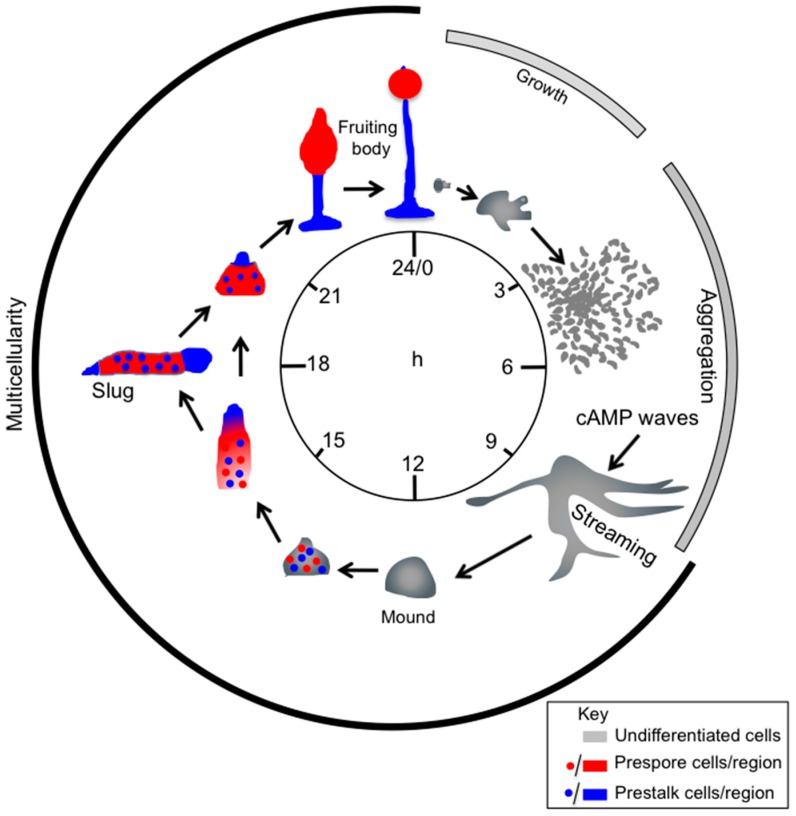Figure 1.
The Dictyostelium discoideum life cycle. Dictyostelium cells grow by feeding on bacteria and dividing by binary fission. Upon exhaustion of nutrients, starving cells start secreting cAMP, which triggers chemotactic motility and aggregation of cells. Aggregation results in the formation of a multicellular organism, a mound, which forms a tip. The tip is a source of continuous cAMP production and acts as an organizer, regulating morphogenesis and differentiation of cells in at least two cell types, pre-spore (red) and pre-stalk (blue) cells, in a proportion of about 80% and 20%, respectively. Following elongation of the tipped mound and toppling onto the substrate, a sausage-shaped organism is formed—the slug-, which migrates for hours, before culminating into a fruiting body. The slug is coated by a cellulose-like extracellular tissue. During slug migration and fruiting body culmination, pre-spore cells sort out in the front region of the slug and on top of the fruiting body, differentiating into spores within a sorus. The pre-stalk cells undergo vacuolation and death, while forming the stalk of the mature fruiting body. The entire process from starvation to formation of the mature fruiting body takes about 24 h (modified from [11]).

